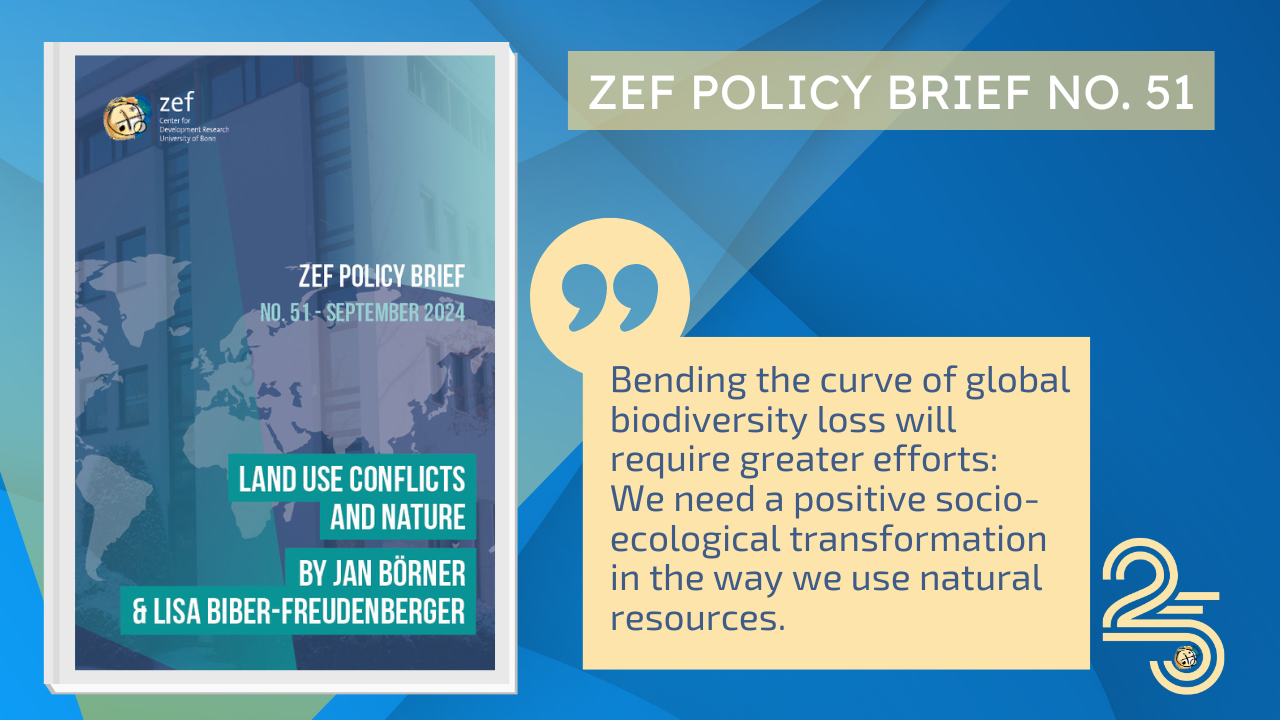Greater involvement of local communities, indigenous peoples, the private sector and civil society in policy-making processes can increase policy acceptance and impact.
How land is linked to biodiversity
Biodiversity contributes to human well-being by providing food and materials, water and climate regulation as well as the cultural, educational and spiritual benefits that humans derive from nature.
Land is at the heart of the biodiversity conservation challenge. It is a limited resource that humanity needs to produce food, materials and energy. Competing land uses, such as agriculture, forestry, urban development and nature conservation, can lead to conflicts that exacerbate biodiversity loss.
ZEF research across disciplinary boundaries
ZEF is engaged in several lines of research on solutions for sustainable socio-environmental transformation. Our research projects develop, assess and often critically evaluate technological and governance innovations aimed at mitigating trade-offs between competing land uses and related conflicts. This includes, for example, research on agricultural technologies, bio-economic innovations, private and public environmental policies and governance arrangements. In addition, our research explores nature-based solutions and the role of equity and diversity in societal transitions.
Land use management involves trade-offs across multiple dimensions of sustainability, as well as complex feedbacks between ecological and social subsystems.
Strong international networks are key
Understanding these trade-offs and systemic relationships requires an inter- and transdisciplinary research approach and international collaboration. Our current science and innovation systems and funding landscape do not always coherently encourage and reward such solution-oriented research approaches. At ZEF, we seek to address this challenge by building strong networks with international partners and investing in inter- and transdisciplinary training of early-career researchers.
Environmental Justice Atlas
One example of research: Based on data on known locations of existing environmental conflicts from the Environmental Justice Atlas, we modelled high-risk and low-risk areas for land use conflicts using indicators of socio-economic conditions such as population density, income and corruption, and land cover characteristics such as distance to a protected or key biodiversity areas, agricultural area and tree cover.
Read the full text in ZEF Policy Brief no. 51 on Land Use Conflicts and Nature by Jan Börner, Professor at Bonn University/ZEF, and Lisa Biber-Freudenberger, Junior-Professor at Bonn University/ZEF.



Leave a Reply